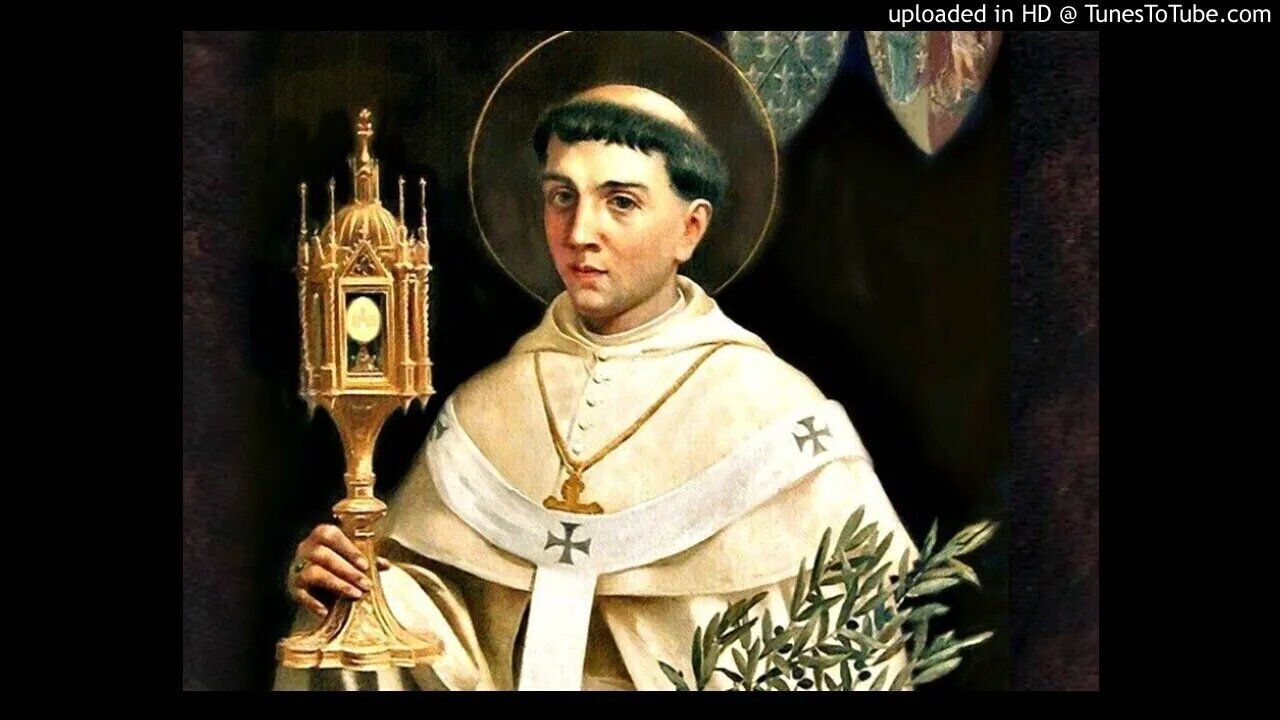Premium Only Content

Saint Norbert - Ave Maria Hour
Norbert of Xanten (c. 1075 – 6 June 1134) also known as Norbert Gennep, was a bishop of the Catholic Church, founder of the Premonstratensian order of canons regular, and is venerated as a saint. Norbert was canonized by Pope Gregory XIII in the year 1582, and his statue appears above the Piazza colonnade of St. Peter's Square in Rome
Norbert was born in Xanten, near the Rhineland in Germany. He grew up and was also educated in Xanten, near Wesel, in the Electorate of Cologne. His father, Heribert, Count of Gennep, was a member of the high nobility of the Holy Roman Empire and related to the imperial house and also to the House of Lorraine. His mother was Hedwig of Guise. Through the influence of his family he obtained a financial subsidy from the parish church of St. Victor at Xanten when he accepted ordination to the subdeaconate. His only task was to chant the Divine Office at the Church, but he apparently paid someone a small fee to take his place in the choir, because he gained an appointment as a chaplain (religious counselor) to the emperor Henry V in Cologne. The salaries from the Xanten fund and the royal treasury were enough to equip him to live in the style of the nobility of the times.
He avoided ordination to the priesthood and even declined an appointment as bishop of Cambrai in 1113. One day in the spring of 1115, as he rode his horse to Vreden, in the western part of the Münsterland, a thunderbolt from a sudden storm struck at his horse’s feet. The animal threw him and he lay unconscious for nearly an hour. After this near-fatal accident, his faith deepened, he renounced his appointment at Court and returned to Xanten to lead a life of penance, placing himself under the direction of Cono, Abbot of St Sigeberg, near Cologne. In gratitude to Cono, in 1115, Norbert founded the Abbey of Fürstenberg, endowed it with a portion of his property, and made it over to Cono of Siegburg and his Benedictine successors. Norbert was then in his thirty-fifth year. He was ordained to the priesthood soon afterward. Norbert was a great devotee of the Eucharist and Our Lady.
He also adopted an asceticism so fierce that it killed his first three disciples. This may account for the failure of his attempts to reform the canons of Xanten,[5] who denounced him as an innovator at the Council of Fritzlar in 1118. He then resigned his benefice, sold all his property and gave the proceeds to the poor. He visited Pope Gelasius II, who gave him permission to become an itinerant preacher and he preached throughout lands in what is now western Germany, Belgium, the Netherlands and northern France, being credited with a number of miracles. In settlement after settlement he encountered a demoralized clergy, lonely, often practicing concubinage and feeling that the official Church cared little about them.
In Paris he would have witnessed the Canons of St. Victor, who had adopted the ascetic ideals of William of Champagne. At Clairvaux and Citeaux he would have seen the Cistercian reforms among the monks. He also became acquainted with the Cistercian administrative system that created an international federation of monasteries with fair amount of centralized power, though local houses had a certain amount of independence. These reforms, written up in their “Charter of Charity” would affect him significantly in his own future work
-
 18:12:15
18:12:15
Chesterton Radio
1 year ago $4.72 earnedChesterton Radio Live - Mystery Drama Adventure - Chuck the TV!
43.9K -
 LIVE
LIVE
Spartan
3 hours agoCharlotte Qualifier watch party + Ranked and Expedition 33
113 watching -
 6:09:54
6:09:54
bigbossrobinson
6 hours agoLIVE - DOUBLE IMPACT - RESIDENT EVIL 4 & METAL GEAR SOLID Δ: SNAKE EATER
4.59K -
 8:18
8:18
MattMorseTV
5 hours ago $4.51 earned2.2 MILLION in ONE YEAR.
26.7K104 -
 14:37
14:37
Colion Noir
8 hours agoCanadian Police Chief Urges Citizens To Comply With Home Invaders And Hide
64.2K80 -
 3:10:59
3:10:59
OVERKLOC
3 hours ago🔴LIVE - CHILL SUNDAY GAMING - WHO KNOWS WHAT WE'LL PLAY
2.99K -

FrizzleMcDizzle
5 hours ago $0.24 earnedNightReign - Lies of P: Overture after - Come hang out
4.55K -
 1:18:54
1:18:54
Jeff Ahern
6 hours ago $11.82 earnedThe Sunday Show with Jeff Ahern
61K7 -
 32:05
32:05
Tactical Advisor
6 hours agoNew Thermal Target for the Military | Vault Room Live Stream 038
48.6K5 -
 LIVE
LIVE
ttvglamourx
9 hours ago $1.88 earnedPLAYING WITH VIEWERS !DISCORD
88 watching